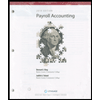
Allocation of common costs. Gordon Grimes, a self-employed consultant near Atlanta, received an invitation to visit a prospective client in Seattle. A few days later, he received an invitation to make a presentation to a prospective client in Denver. He decided to combine his visits, traveling from Atlanta to Seattle, Seattle to Denver, and Denver to Atlanta.
Grimes received offers for his consulting services from both companies. Upon his return, he decided to accept the engagement in Denver. He is puzzled over how to allocate his travel costs between the two clients. He has collected the following data for regular round-trip fares with no stopovers:
| Atlanta to Seattle | $600 |
| Atlanta to Denver | $400 |
Grimes paid $900 for his three-leg flight (Atlanta–Seattle, Seattle–Denver, Denver–Atlanta). In addition, he paid $45 each way ($90 total) for limousines from his home to Atlanta Airport and back when he returned.
- 1. How should Grimes allocate the $900 airfare between the clients in Seattle and Denver using (a) the stand-alone cost-allocation method, (b) the incremental cost-allocation method, and (c) the Shapley value method?
Required
- 2. Which method would you recommend Grimes use and why?
- 3. How should Grimes allocate the $90 limousine charges between the clients in Seattle and Denver?
Want to see the full answer?
Check out a sample textbook solution
Chapter 15 Solutions
COST ACCOUNTING
- 4 POINTSarrow_forwardSmith Corporation uses direct labor hours in its predetermined overhead rate. At the beginning of the year, the estimated direct labor hours were 24,500 hours, and the total estimated manufacturing overhead was $490,000. At the end of the year, actual direct labor hours for the year were 24,200 hours, and the actual manufacturing overhead for the year was $495,000. Overhead at the end of the year was: a. $16,500 overapplied b. $14,800 underapplied c. $11,000 underapplied d. $10,500 underappliedarrow_forwardThe Blue Jay Corporation has annual sales of $5,200, total debt of $1,500, total equity of $2,800, and a profit margin of 8 percent. What is the return on assets? a. 8.50 percent b. 10.55 percent c. 9.67 percent d. 7.89 percent e. 12.22 percent.Answer this questionarrow_forward
